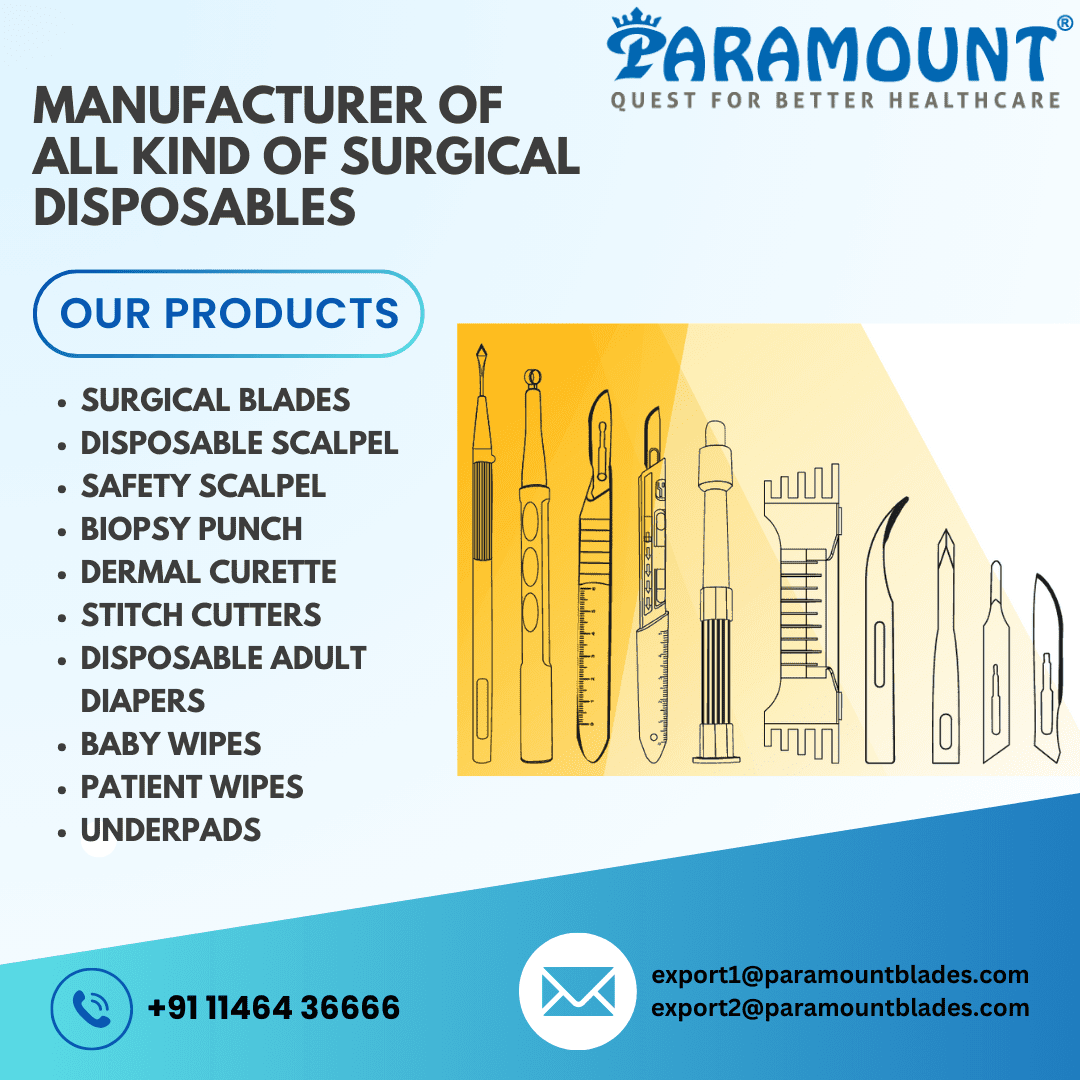Infection control has always been a top priority in healthcare settings, but the COVID-19 pandemic heightened the focus on patient safety and reducing cross-contamination. Even before the pandemic, medical professionals and administrators worked diligently to strengthen protocols, guided by organizations such as the Centers for Disease Control and Prevention (CDC), the Food and Drug Administration (FDA), and the Joint Commission. One significant shift in infection control strategies is the increased adoption of single-use surgical instruments, which are proving to be a game-changer in reducing healthcare-associated infections (HAIs).
The Growing Need for Single-Use Surgical Instruments
Despite rigorous cleaning, disinfection, and sterilization protocols for reusable medical devices, the risk of cross-contamination remains a challenge. The CDC strongly recommends using single-use, sterile surgical instruments whenever possible to eliminate the risk of patient-to-patient transmission. According to a report in Repertoire magazine, sterile, single-use items are considered “the only way to ensure 100% sterility for all patients.”
Surgical site infections (SSIs) remain the most common healthcare-associated infections. While it is difficult to quantify the exact role contaminated reusable instruments play in SSIs, experts believe the incidence is higher than commonly assumed. Bacteria can be difficult to eliminate entirely, especially in complex micro-instruments designed for minimally invasive procedures. These instruments are challenging to clean thoroughly, making the reprocessing of reusable surgical tools an increasingly difficult task.
The Shift Towards Disposable Instruments
The healthcare industry is increasingly embracing disposable surgical instruments to address infection control concerns. A study by the Freedonia Group revealed that the demand for disposable medical products in the U.S. is expected to grow by 4.1% annually, reaching $49 billion.
Hospitals and surgical centers are recognizing the numerous benefits of single-use instruments, including:
1. Enhanced Risk Management
Sterile disposables significantly reduce the risk of cross-contamination, thereby limiting the spread of infections within healthcare facilities.
2. Elimination of Sterilization and Reprocessing
By using single-use instruments, healthcare providers eliminate the need for cleaning, disinfection, and sterilization. This saves time, improves operational efficiency, and reduces costs associated with maintaining autoclaves and disinfectant solutions.
3. Improved Instrument Traceability
Each single-use instrument is individually packaged and labeled with a batch number, making it easy for healthcare providers to track its production date and origin.
4. Simplified Logistics and Inventory Management
Maintaining a stock of expensive reusable devices is no longer cost-effective for many healthcare facilities. As minor surgeries in outpatient settings become more common, disposable instruments provide a practical, cost-efficient solution. These products eliminate the need for reprocessing equipment while allowing healthcare providers to scale inventory based on demand.
5. Reduced Cost Burden on Hospitals and Insurers
The cost of sterilizing and reprocessing reusable instruments is a significant financial burden for hospitals and insurance companies. Disposable surgical instruments help cut these costs by eliminating the need for complex sterilization procedures.
6. Overall Cost Savings
Although disposable instruments may seem costly at first glance, the time and resources required for sterilizing and maintaining reusable instruments often exceed the cost of using disposables. Hospitals and clinics that transition to single-use products benefit from long-term financial savings and improved patient safety.
Making the Transition to Single-Use Instruments
For healthcare facilities considering a transition to disposable surgical instruments, it is essential to evaluate specific needs alongside regulatory guidelines and industry recommendations. The shift towards single-use surgical instruments is not just a trend—it is a crucial step in strengthening infection control measures and ensuring safer surgical outcomes for patients worldwide.

